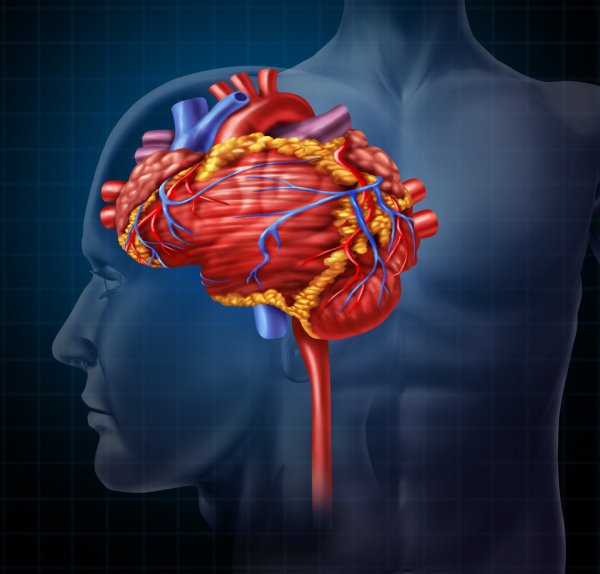Our minds can be divisive when we need to embody our emotions and make sense of them. We all know the feeling of being made crazy by our thoughts. Yet, when employed skillfully, our minds are essential for healing our hearts. Given that emotion has both a feeling component and a mental-cognitive aspect, both feeling and thinking are needed for comprehensive, integral emotional healing.
Emotions are mediated not in our literal hearts inside our chest, but in the emotional center of our brain — the limbic system of our mid-brain, to be exact. This is the feeling part of our brain that orchestrates emotional sensations and physiological responses in our body, including that sacred spot in our chest. So, when we use the word “heart” to describe our feelings and emotions, we do this based on what our experience feels like, because we feel emotions in the region of our chest.
But in reality, our “feeling heart” is in our brain, which triggers the release of hormones and neurotransmitters so that we viscerally feel emotion in our body. Emotions originate not in our chest or any other parts of our body beneath our anatomical head (which sub-head region I will just call “body” for simplicity), but in that mushy, fatty organ in our heads.
With this said, and ironically again, the brain can’t physically feel itself. We feel emotions in our body not because the emotions somehow live exclusively in our flesh and bone outside our head. Cellular emotional memory is therefore encoded largely in our brains, and in very specific parts of the brain. These brain memories in turn activate our peripheral nervous system, which includes our motor neuron system (initiates physical movement), which might be able to “remember” emotional experience (scientists aren’t sure yet, last I checked), in addition to the brain proper.
Our peripheral nervous system, consisting of both the somatic and autonomic nervous systems, is connected to the emotional centers of our brain. Therefore, physical stimulation of parts of our body that were connected with past emotional experiences can trigger a whole gamut of emotional experience, including memories, thoughts, feelings, and images. This is why emotions can be triggered both through mental recall and having part of our body sensitized or activated, such as during bodywork, making love, or a yoga session.
Coded memories of specific events form neurological connections between the brain and other parts of our body. When we perceive situations that remind us of the past, this can cause us to “feel” emotions in the present related to the past. The hormones cortisol, epinephrine, and norepinephrine are secreted when we perceive fear. Adrenaline and noradrenaline levels rise when we are angered, and contribute to the physiological feeling of anger. Adrenaline and noradrenaline function as neurotransmitters and hormones and are secreted both by the brain and kidney-adrenal system via the autonomic nervous system, which system mediates our fear response.
Indeed, what sets off most emotional experience is our perception—both conscious and unconscious—which is the activity of our mind, which involves our brains. Fear is often unconscious and mediated by the sympathetic branch of the autonomic nervous system, because it’s the most fundamental emotion to ensure our survival in the face of danger, or perceived danger. If fear were always conscious we would likely be dead by now, because it would take too long for us to consciously decide to get out of the way of the oncoming car, bear, falling tree (or scary member of the opposite sex!) In her article on emotional mapping in the body, psychologist Lauri Numenmaa writes:
“Say you see a snake and you feel fear … Your nervous system increases oxygen to your muscles and raises your heart rate so you can deal with the threat. It’s an automated system. We don’t have to think about it.”
Thanks for reading. Part II on helpful fear will be posted soon.


